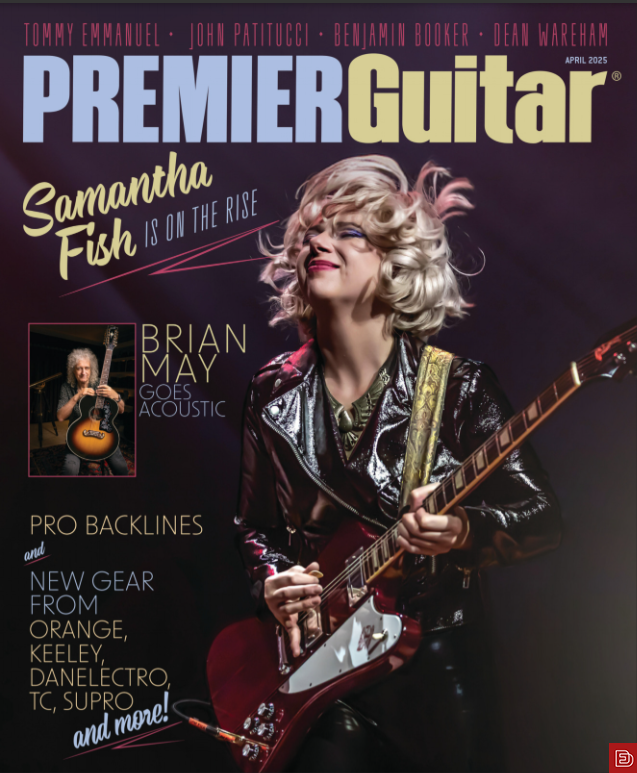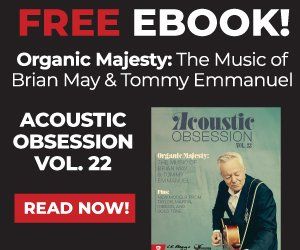When these metalheads couldn’t lasso the tones in their craniums, Nuñez took the DIY route and launched his own company to create gear for their boards and backline.
Another friend, another guitar … this time Jonathan Nuñez enlisted the help of Rig Rundown alumnus Sacha Dunble, who is the guitarist/vocalist for Intronaut and the main man behind Dunable Guitars. This is a Dunable Cyclops that has a Bill Lawrence L-500 in the bridge and a Dunable Baphomet in the neck.
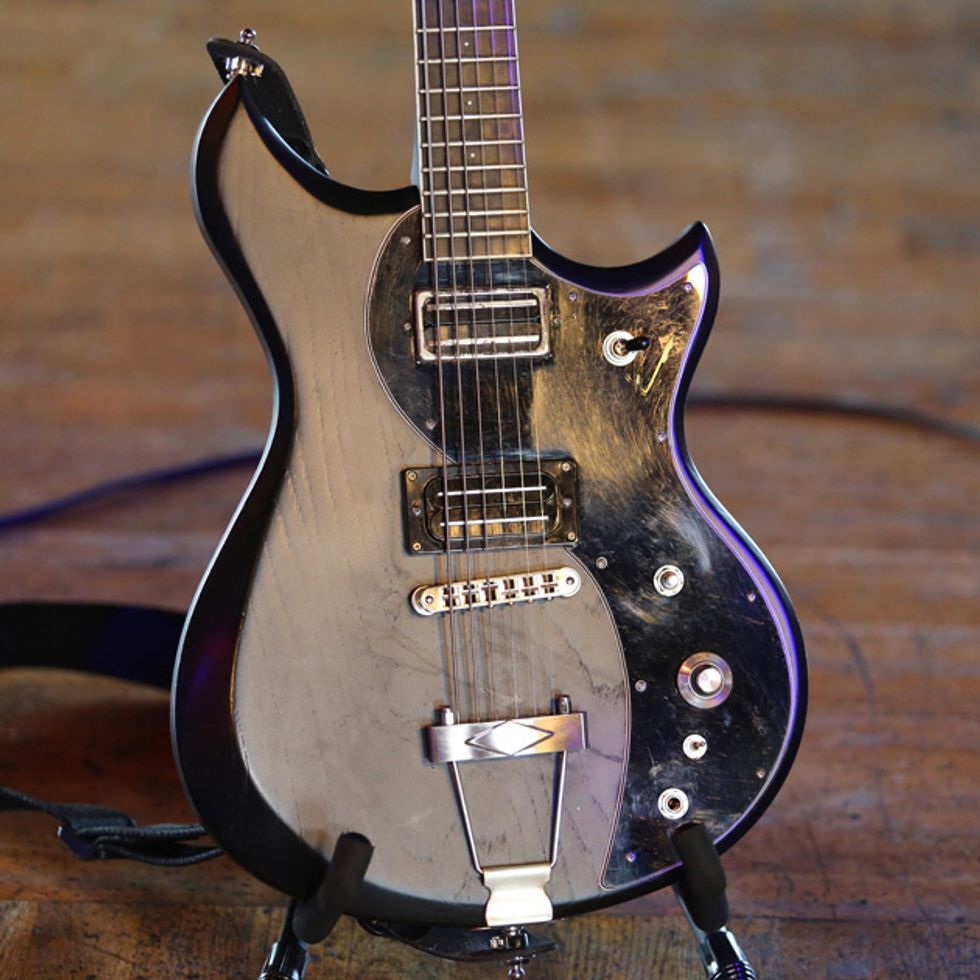
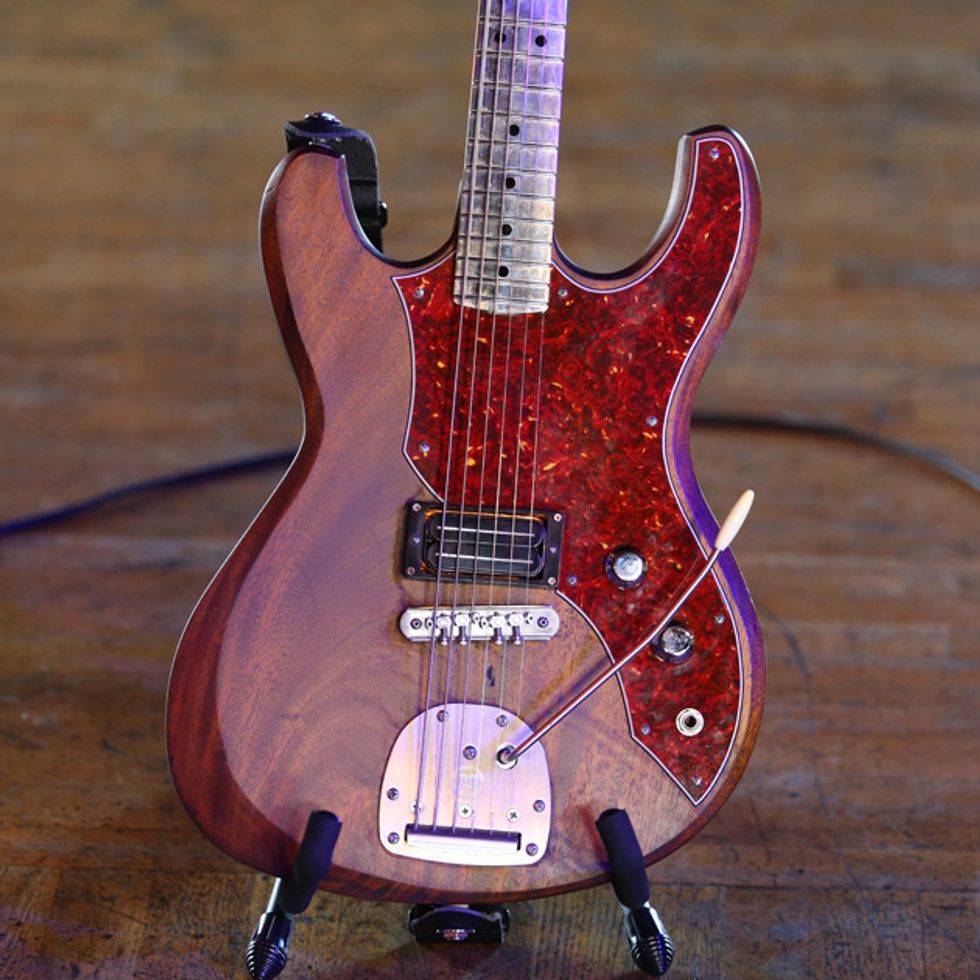
This beauty cherry picks aspects from Jonathan Nuñez’s favorite guitars. It all started with his love affair with his friend’s G&L F-100 while recording Admission. The F-100 he borrowed had a smooth floating trem arm that bends and wobbles all over the new record. “The trem was too much fun to play,” Nuñez jokes. “But once we finished the record, I realized, shit, I need to pull this off live.”
So, with the task of reverse engineering a guitar that is suited for Torche’s established roar and new tones flexed on Admission, Nuñez turned to some more friends. To keep in tradition with bandmate Steve Brooks’ and Torche’s steam-locomotive sound, he got a metal neck from Robot Graves Industries and put it with a curvy, mahogany, Mosrite-style body built by fellow South Florida rocker Joe Koontz (formerly of Against All Authority aka AAA). Nuñez has always been partial to the Bill Lawrence L-500 humbucker and thanks to his buddy (and Rig Rundown alumnus) Bobb Bruno of Best Coast turned him onto the Mastery OMV Vibrato, so those features made into this custom piece. All of his guitars take custom-gauge Dunlop strings (.070–.052–.046–.017–.013–.010). The band’s main tuning is an octave tuning that consists of A–A–D–G–B–E.
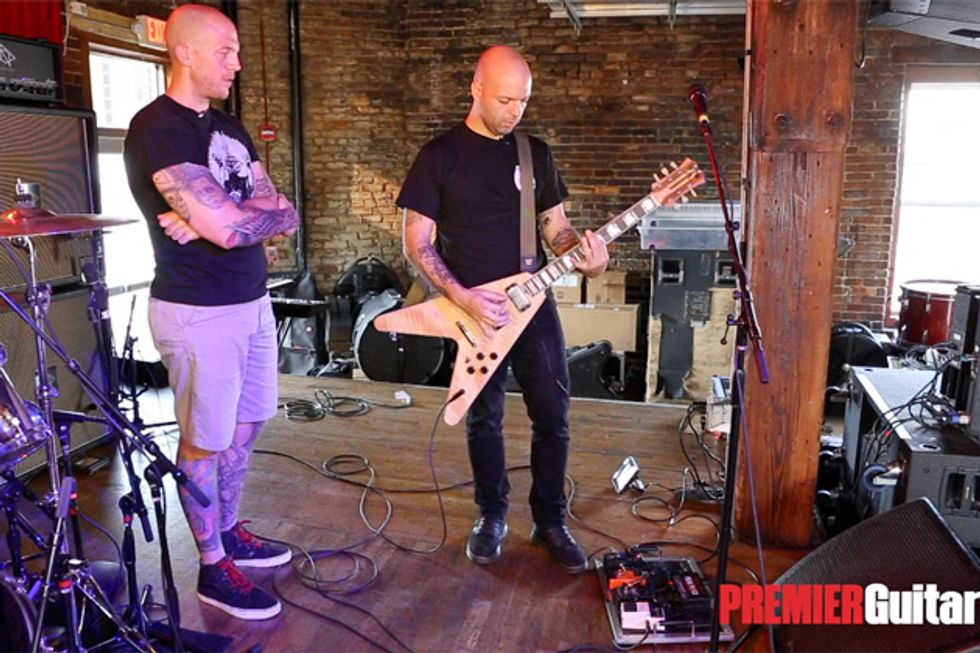
On the heels of their fifth album, 2019’s Admission, Torche hit the road for an extensive tour that started out having the harmonious doomers open for Baroness before venturing out for their own headlining sets. We fortunately caught the band on the latter run and guitarist Jonathan Nuñez (who also has served as the band’s bassist for 13 years and producer/engineer for Admission) spoke to PG’s Chris Kies about his and Steve Brooks’ slim setups that center around custom-made, metal-neck instruments and explains why he started Nuñez Amplification, which has become a big part of the band’s sonorous sonic imprint.
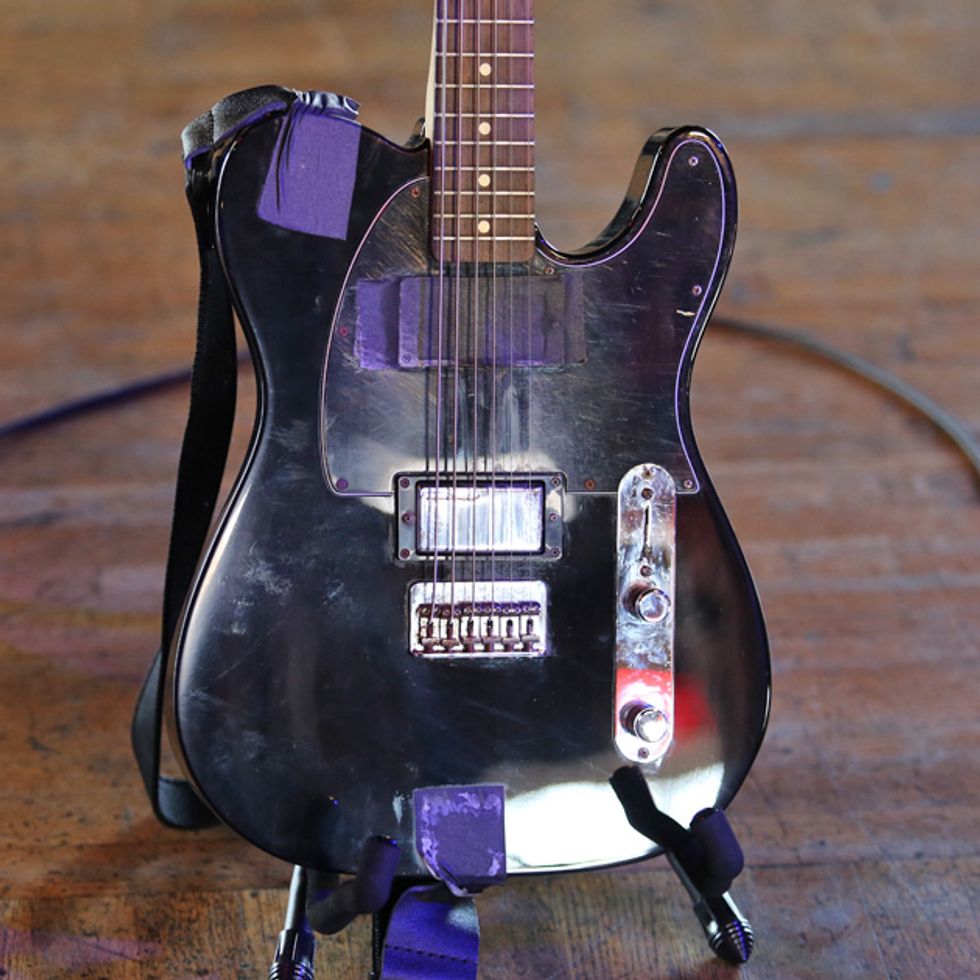
This Fender Telecaster HH Rosewood (with a Lace Nitro Hemi in the bridge) is the “bomb-note” guitar that sees stage time for “Infierno,” “What Was,” and “Annihilation Affair.” It takes the same .010–.070 strings and is set to the aforementioned octave tuning, but (as you’ll hear in the video) the 6th string is, well, not exactly ready for battle. It flops and allows Nuñez and Brooks to thwap the dead string producing a huge bomb-drop note. This was first discovered when Brooks was recording with his first band Floor and someone busted a string mid song, causing a lightning-strike noise.
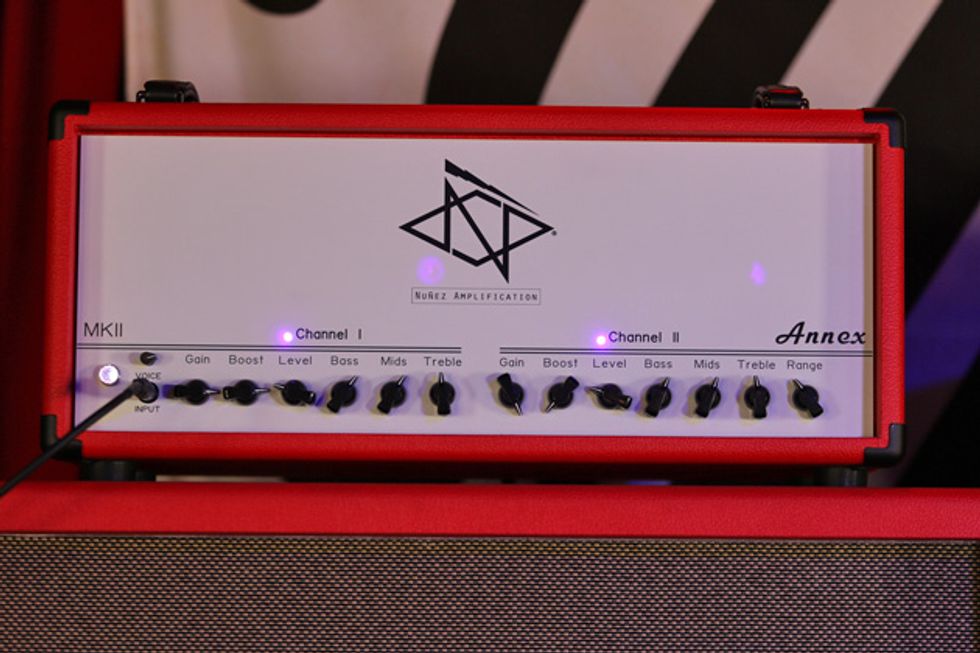
In 2017, Nuñez switched from bass to guitar and missed the blowing breeze that his Ampeg 8x10 stack stirred up each night. Feeling a void after trying countless amps, Nuñez got Overtone Works’ Gary Phillips on the horn and the first idea that came to fruition was the Annex Bass Channel pedal. After that, the tone-chasing duo set their sights on an Annex guitar amp. The way Nuñez describes this 130-watt behemoth is this: “a handwired, discrete class A/B, quad-voiced, dual-channel, all-tube head.” Each channel is independent, so you’re essentially getting two amps in one box. Channel one has symmetrical clipping, while channel two has asymmetrical clipping. This growler is brought to life thanks to a quartet of EL34s. The one shown above is a MkII variant.
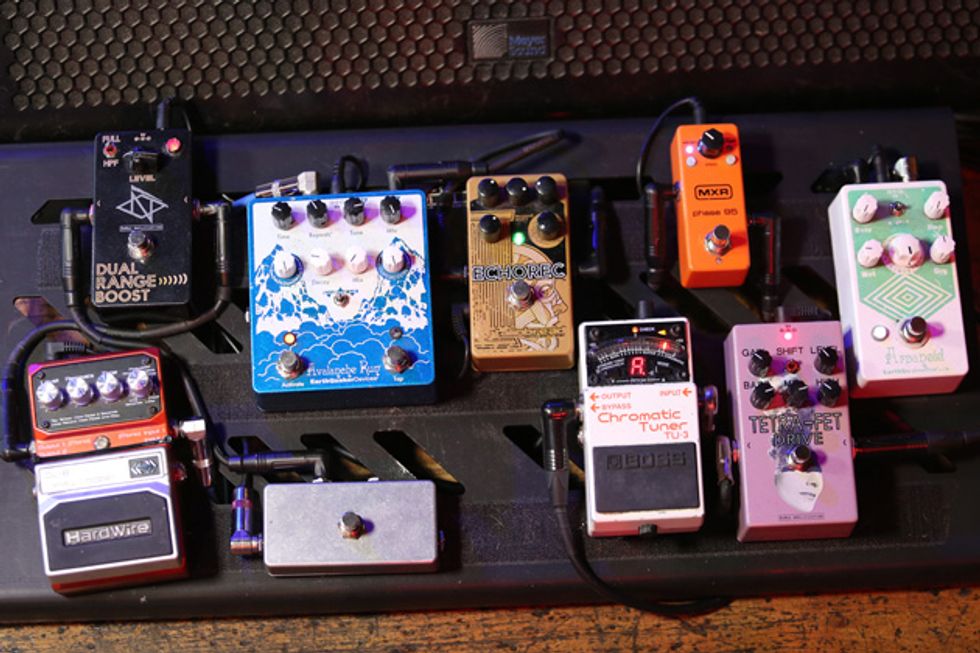
Jonathan Nuñez’s pedal playground is host to a pair of EarthQuaker Devices stomps—Arpanoid and Avalanche Run—a Nuñez Dual Range Boost and Nuñez Tetra-Fet Drive (with custom Admission artwork), an MXR Phase 95, Catalinbread Echorec, and DigiTech HardWire DL-8 Delay/Looper. A Boss TU-3 keeps everything in tune.
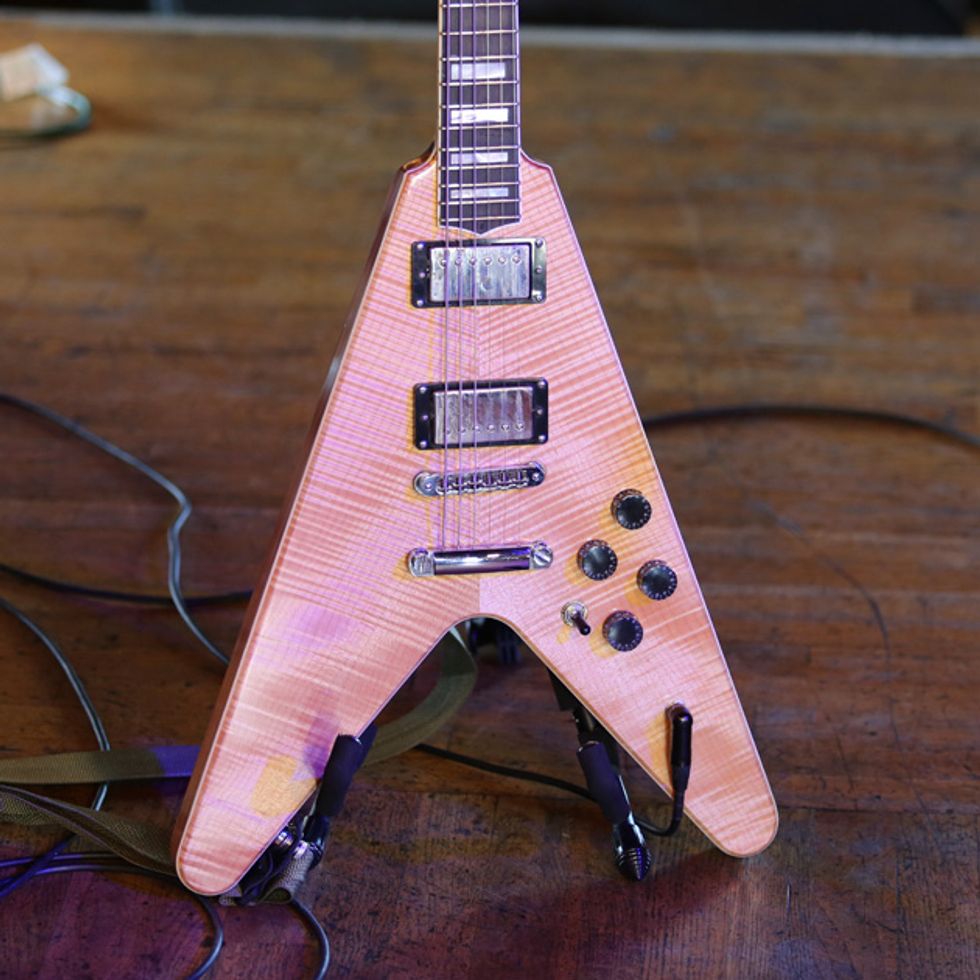
Guitarist/singer Steve Brooks first got his hands around a JML Custom Guitar when Jay Lewis handbuilt a neck-through, SG-style ripper that was cleverly coined the SB. Steve always wanted a V so he commissioned the builder to create an oversized, neck-through version that’s approximately 1.25 the size of a standard model.
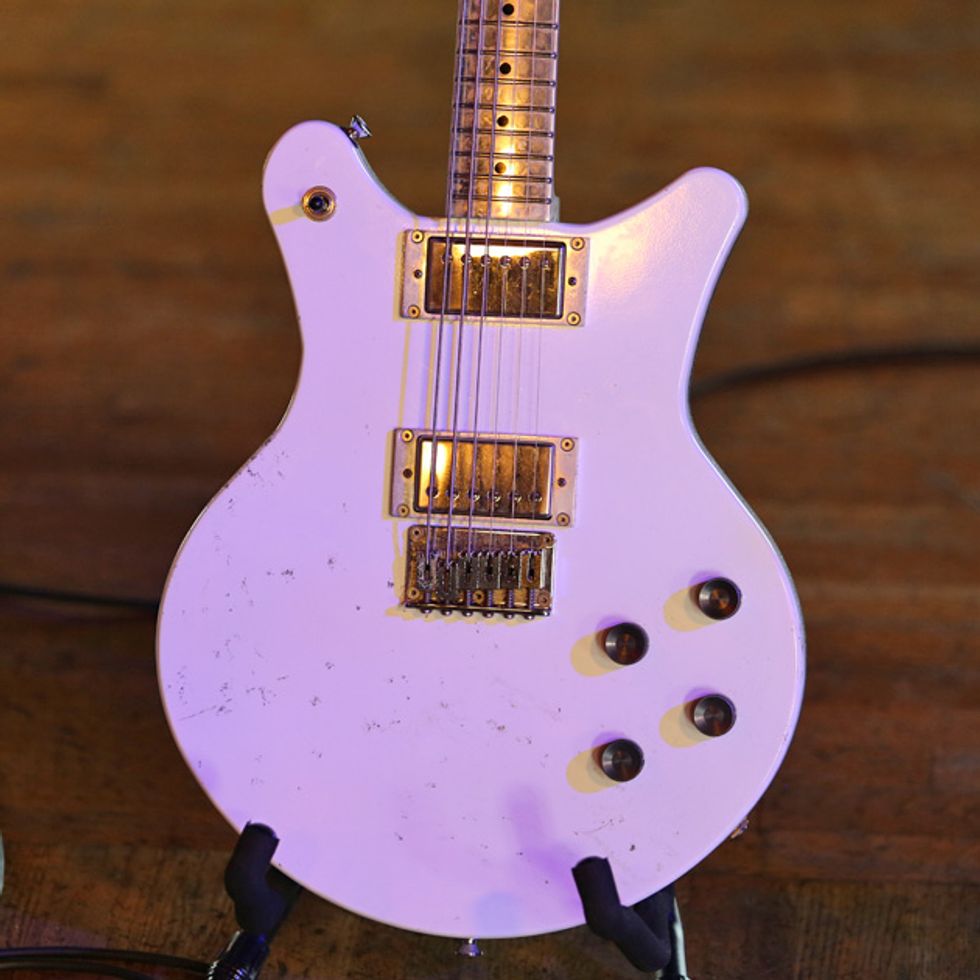
If you’re a loyal Torche fan, you’ll recognize this Electrical Guitar Copmany Standard as Steve Brooks’ longtime main ride that still sees plenty of stage time when the band goes through older material.

This Nuñez Annex MkII is from one of the first batches and been Brooks’ amp of choice since working on Admission. There are minimal differences between this head and the newer one Nuñez plugs into, mainly cosmetics (the company now offers more colors to not pigeonholed themselves into a specific musical genre or player), upgraded circuitry components, and an fine-tuned FX loop, but Brooks still plugs into the front of the amp.
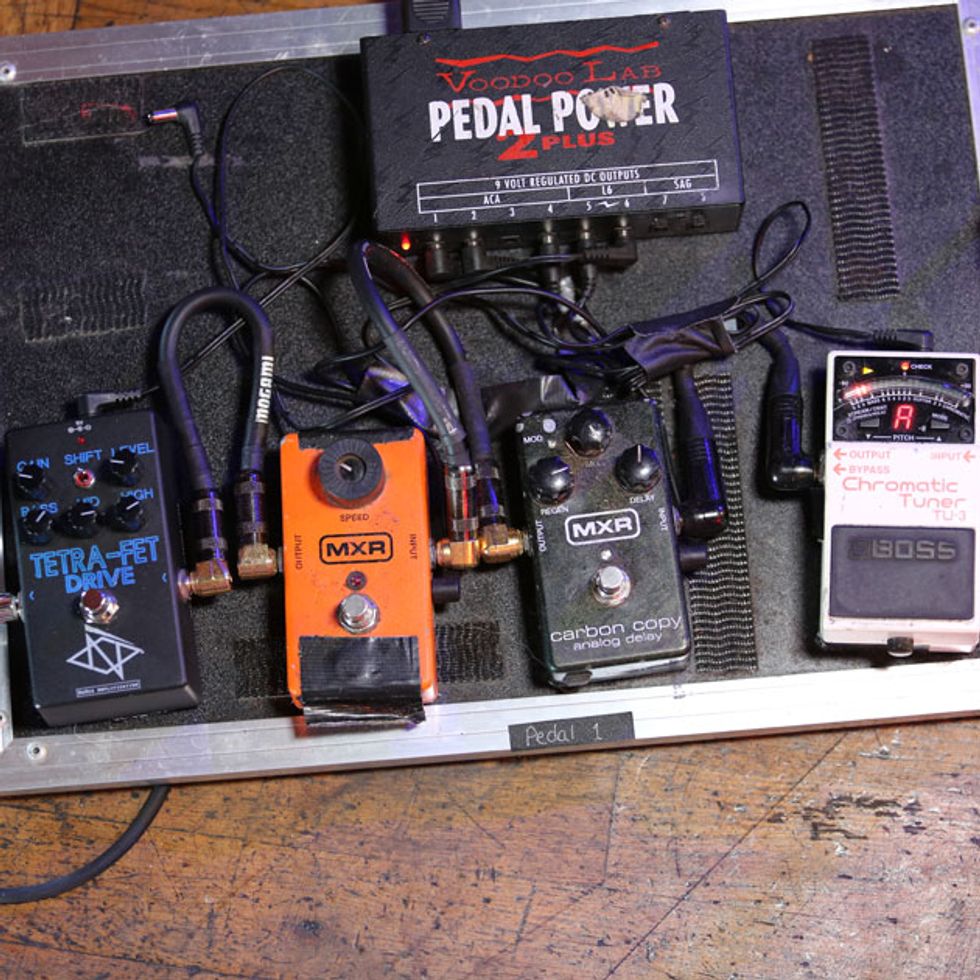
Steve Brooks is more of a rhythm, meat-and-potatoes player and keeps an airport-friendly board. He has an MXR Carbon Copy, MXR Phase 90, and a Nuñez Tetra-Fet Drive. A Boss TU-3 keeps everything in check and a Voodoo Lab Pedal Power 2 Plus brings the noisemakers to life.
Click below to listen wherever you get your podcasts:
 |  |
 |  |
D'Addario Pro-Winder:https://www.daddario.com/ProWinderRR
The country virtuoso closes out this season of Wong Notes with a fascinating, career-spanning interview.
We’ve saved one of the best for last: Brad Paisley.The celebrated shredder and seasoned fisherman joins host Cory Wong for one of this season’s most interesting episodes. Paisley talks his earliest guitar-playing influences, which came from his grandfather’s love of country music, and his first days in Nashville—as a student at Belmont University, studying the music industry.
The behind-the-curtain knowledge he picked up at Belmont made him a good match for industry suits trying to force bad contracts on him.
Wong and Paisley swap notes on fishing and a mutual love of Phish—Paisley envies the jam-band scene, which he thinks has more leeway in live contexts than country. And with a new signature Fender Telecaster hitting the market in a rare blue paisley finish, Paisley discusses his iconic namesake pattern—which some might describe as “hippie puke”—and its surprising origin with Elvis’ guitarist James Burton.
Plus, hear how Paisley assembled his rig over the years, the state of shredding on mainstream radio, when it might be good to hallucinogenic drugs in a set, and the only negative thing about country-music audiences.
Tom Bedell in the Relic Music acoustic room, holding a custom Seed to Song Parlor with a stunning ocean sinker redwood top and milagro Brazilian rosewood back and sides.
As head of Breedlove and Bedell Guitars, he’s championed sustainability and environmental causes—and he wants to tell you about it.
As the owner of the Breedlove and Bedell guitar companies, Tom Bedell has been a passionate advocate for sustainable practices in acoustic guitar manufacturing. Listening to him talk, it’s clear that the preservation of the Earth’s forests are just as important to Bedell as the sound of his guitars. You’ll know just how big of a statement that is if you’ve ever had the opportunity to spend time with one of his excellently crafted high-end acoustics, which are among the finest you’ll find. Over the course of his career, Bedell has championed the use of alternative tonewoods and traveled the world to get a firsthand look at his wood sources and their harvesting practices. When you buy a Bedell, you can rest assured that no clear-cut woods were used.
A born storyteller, Bedell doesn’t keep his passion to himself. On Friday, May 12, at New Jersey boutique guitar outpost Relic Music, Bedell shared some of the stories he’s collected during his life and travels as part of a three-city clinic trip. At Relic—and stops at Crossroads Guitar and Art in Gilbertsville, Pennsylvania, and Chuck Levin’s Washington Music Center in Wheaton, Maryland—he discussed his guitars and what makes them so special, why sustainability is such an important cause, and how he’s putting it into practice.
Before his talk, we sat in Relic’s cozy, plush acoustic room, surrounded by a host of high-end instruments. We took a look at a few of the store’s house-spec’d Bedell parlors while we chatted.
“The story of this guitar is the story of the world,” Bedell explained to me, holding a Seed to Song Parlor. He painted a picture of a milagro tree growing on a hillside in northeastern Brazil some 500 years ago, deprived of water and growing in stressful conditions during its early life. That tree was eventually harvested, and in the 1950s, it was shipped to Spain by a company that specialized in church ornaments. They recognized this unique specimen and set it aside until it was imported to the U.S. and reached Oregon. Now, it makes the back and sides of this unique guitar.
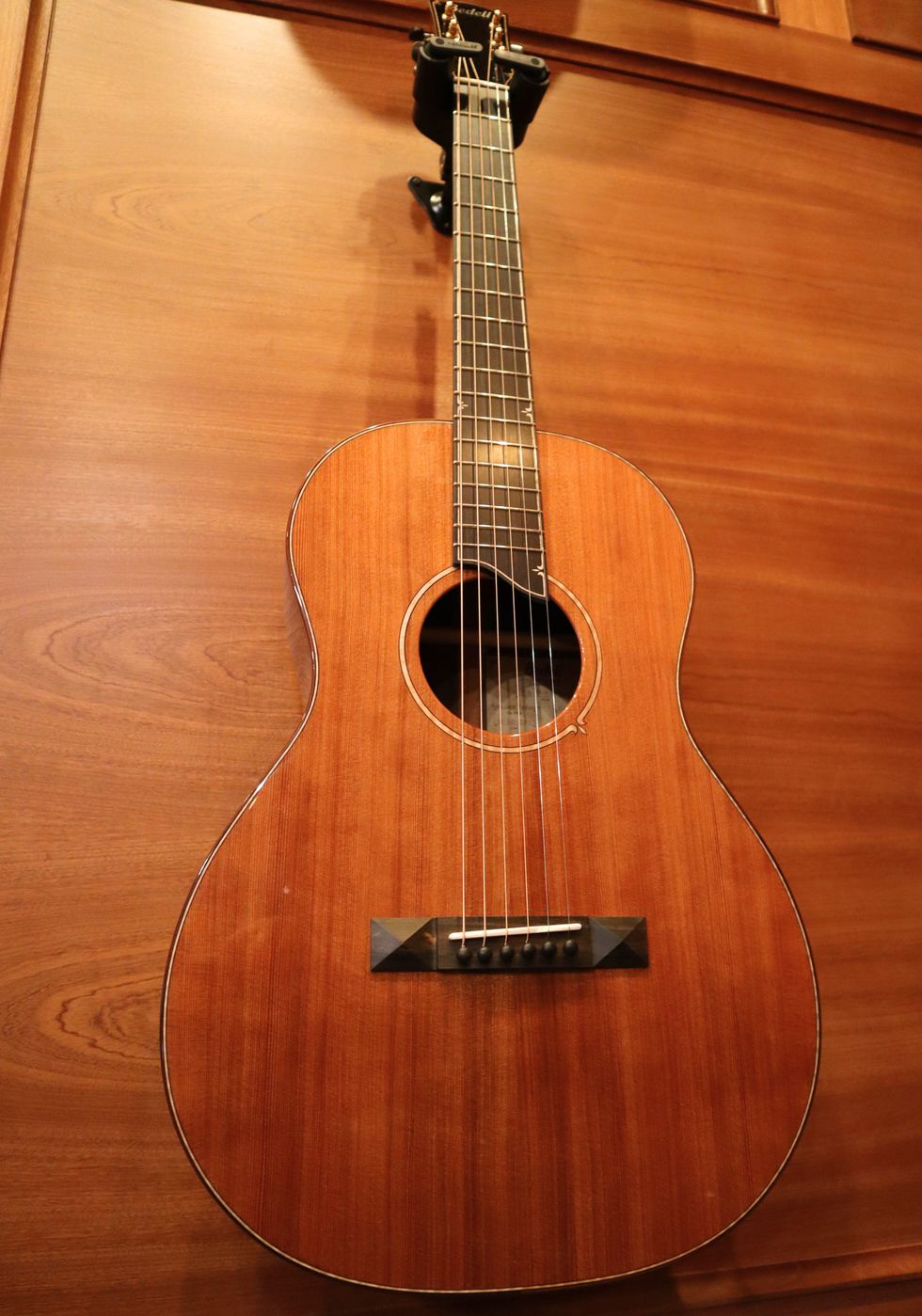
A Bedell Fireside Parlor with a buckskin redwood top and cocobolo back and sides.
As for the ocean sinker redwood top, “I’m gonna make up the story,” Bedell said, as he approximated the life cycle of the tree, which floated in the ocean, soaking up minerals for years and years, and washed ashore on northern Oregon’s Manzanita Beach. The two woods were paired and built into a small run of exquisitely outfitted guitars using the Bedell/Breedlove Sound Optimization process—in which the building team fine-tunes each instrument’s voice by hand-shaping individual braces to target resonant frequencies using acoustic analysis—and Bedell and his team fell in love.
Playing it while we spoke, I was smitten by this guitar’s warm, responsive tone and even articulation and attack across the fretboard; it strikes a perfect tonal balance between a tight low-end and bright top, with a wide dynamic range that made it sympathetic to anything I offered. And as I swapped guitars, whether picking up a Fireside Parlor with a buckskin redwood top and cocobolo back and sides or one with an Adirondack spruce top and Brazilian rosewood back and sides, the character and the elements of each instrument changed, but that perfect balance remained. Each of these acoustics—and of any Bedell I’ve had the pleasure to play—delivers their own experiential thumbprint.
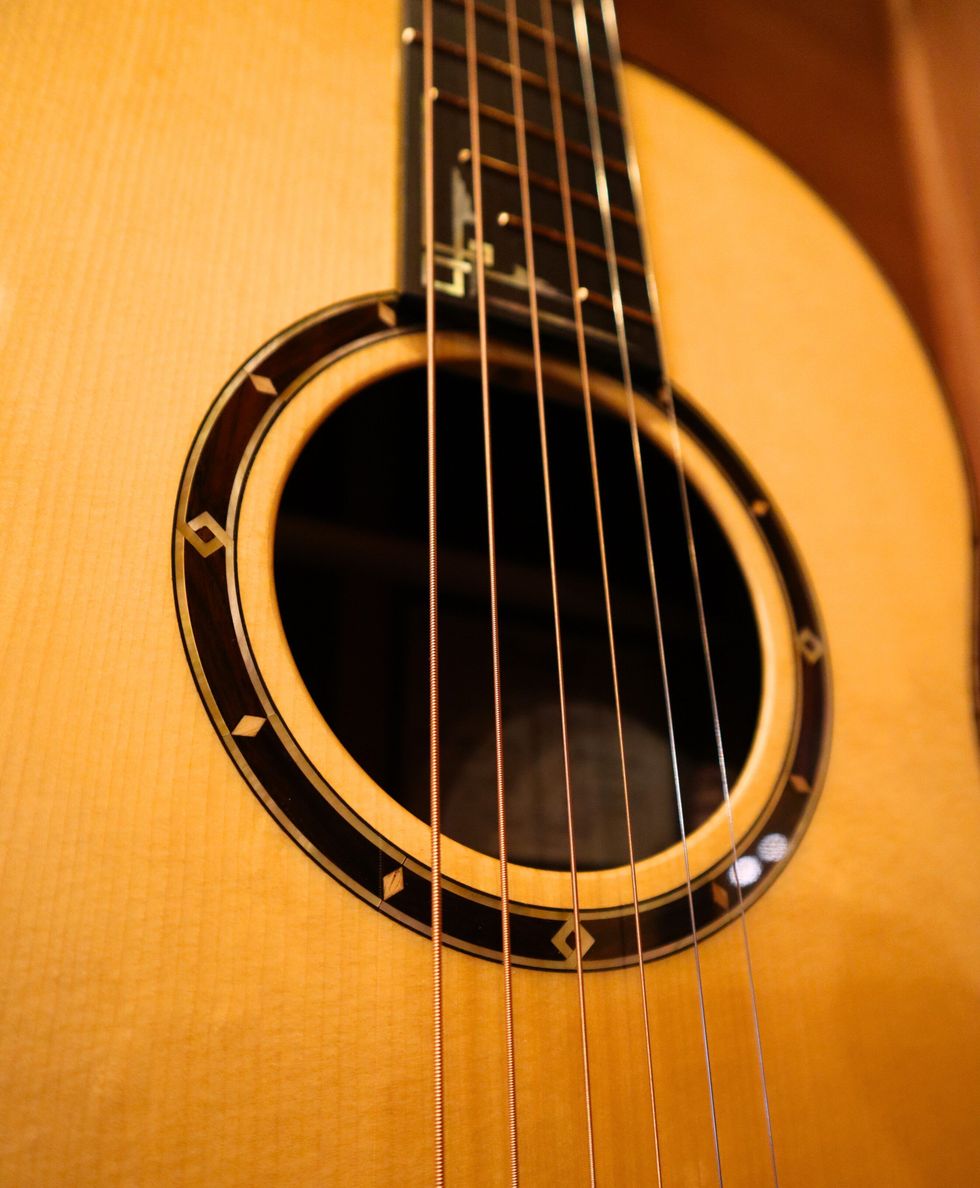
Rosette and inlay detail on an Adirondack spruce top.
Ultimately, that’s what brought Bedell out to the East Coast on this short tour. “We have a totally different philosophy about how we approach guitar-building,” Bedell effused. “There are a lot of individuals who build maybe 12 guitars a year, who do some of the things that we do, but there’s nobody on a production level.” And he wants to spread that gospel.
“We want to reach people who really want something special,” he continued, pointing out that for the Bedell line, the company specifically wants to work with shops like Relic and the other stores he’s visited, “who have a clientele that says I want the best guitar I can possibly have, and they carry enough variety that we can give them that.”
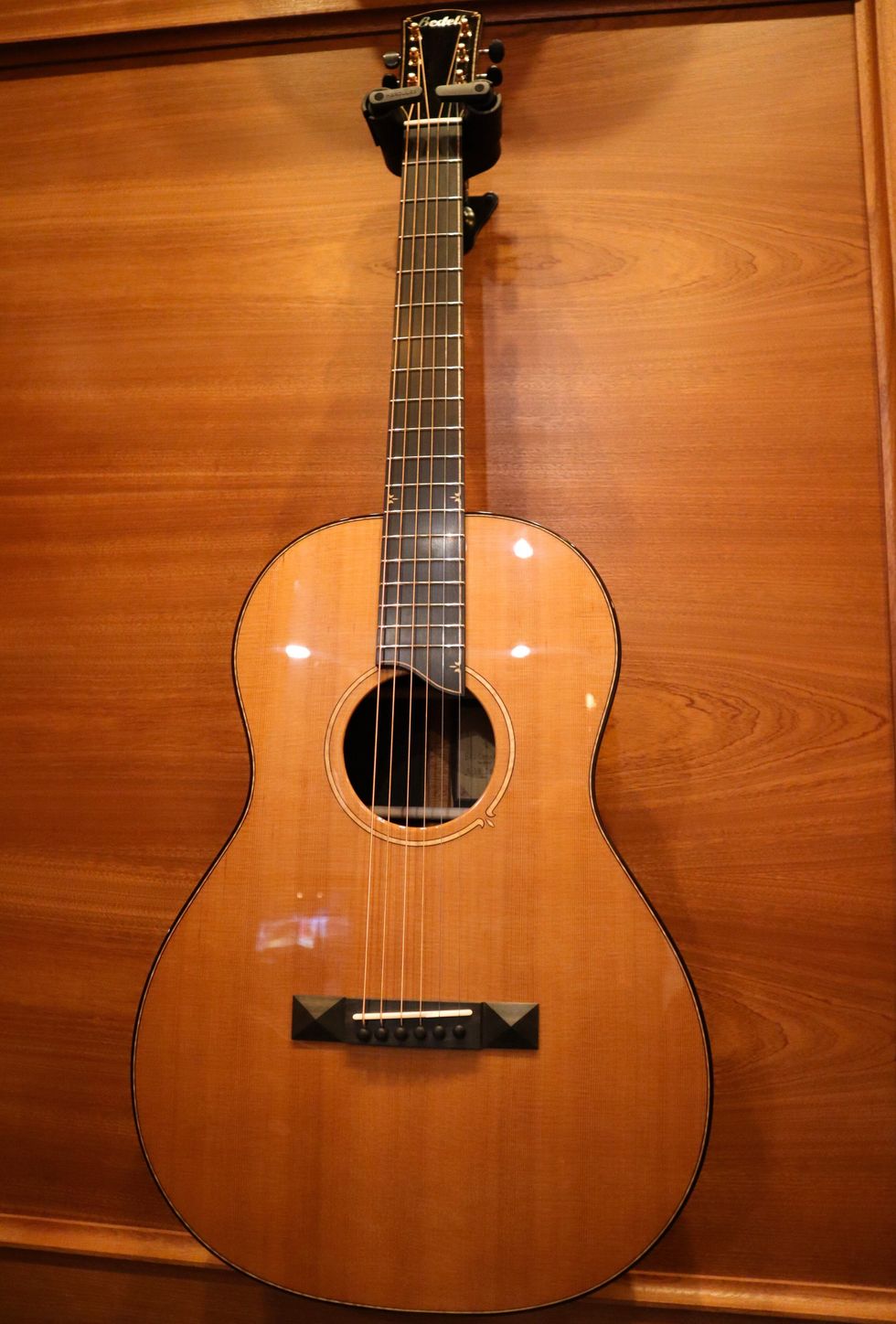
A Fireside Parlor with a Western red cedar top and Brazilian rosewood back and sides.
A beautifully realized mashup of two iconic guitars.
Reader: Ward Powell
Hometown: Ontario, Canada
Guitar: ES-339 Junior
I’ve always liked unusual guitars. I think it started when I got my first guitar way back in 1976. I bought a '73 Telecaster Deluxe for $200 with money I saved from delivering newspapers.
I really got serious about playing in 1978, the same year the first Van Halen album was released. Eddie Van Halen was a huge influence on me, including how he built and modded guitars. Inspired by Eddie, I basically butchered that Tele. But keep in mind, there was once a time when every vintage guitar was just a used guitar—I still have that Tele, by the way.
I never lost that spirit of wanting guitars that were unique, and have built and modded a few dozen guitars since. When I started G.A.S.-ing simultaneously for a Les Paul Junior and a Casino, I came up with this concept. I found an Epiphone ES-339 locally at a great price. It already had upgraded CTS pots, Kluson tuners, and the frets had been PLEK’d. It even came with a hardshell case. It was cheap because it was a right-handed guitar that had been converted to left handed and all the controls had been moved to the opposite side, so it had five additional holes in the top.
Fortunately, I found a Duesenberg wraparound bridge that used the same post spacing as a Tune-o-matic. I used plug cutters to cut plugs out of baltic birch plywood to fill the 12 holes in the laminated top. I also reshaped the old-style Epiphone headstock. Then, I sanded off the original finish, taped the fretboard, and sprayed the finish using cans of nitro lacquer from Oxford Guitar Supply. Lots of wet sanding and buffing later, the finish was done.
I installed threaded insert bushings for the bridge, so it will never pull out. The pickup is a Mojotone Quiet Coil P-90 and I fabricated a shim from a DIY mold and tinted epoxy to raise the P-90 up closer to the strings. The shim also covers the original humbucker opening. I cut a pickguard out of a blank and heated it slightly to bend it to follow the curvature of the top.
All in all, I'm pretty happy how it turned out! It plays great and sounds even better. And I have something that is unique: an ES-339 Junior.
ENGL, renowned for its high-performance amplifiers, proudly introduces the EP635 Fireball IR Pedal, a revolutionary 2-channel preamp pedal designed to deliver the legendary Fireball tone in a compact and feature-rich format.
The EP635 Fireball IR Pedal brings the raw power and precision of the ENGL Fireball amplifier into a pedalboard-friendly enclosure, offering unmatched flexibility and tonal control for guitarists of all styles. This cutting-edge pedal is equipped with advanced features, making it a must-have for players seeking high-gain perfection with modern digital convenience.
Key Features:
- Authentic Fireball Tone – Designed after the renowned ENGL Fireball amplifier, the EP635 delivers the unmistakable high-gain aggression and clarity that ENGL fans love.
- Two Independent Channels – Easily switch between two distinct channels, with each channel’s knob settings saved independently, allowing for seamless transitions between tones.
- Built-in Midboost Function – Enhance your tone with the integrated Midboost switch, perfect for cutting through the mix with extra punch.
- Advanced Noise Gate – Eliminate unwanted noise and maintain articulate clarity, even with high-gain settings.
- IR (Impulse Response) Loading via USB-C – Customize your sound with user-loadable IRs using the included software, bringing studio-quality cab simulations to your pedalboard.
- Headphone Output – Silent practice has never been easier, with a dedicated headphone output for direct monitoring.
- Premium Build and Intuitive Controls – Featuring a rugged chassis and responsive controls for Volume, Gain, Bass, Middle, Treble, and Presence, ensuring precise tonal shaping.
SPECS:
- Input 1/4” (6,35mm) Jack
- Output 1/4” (6,35mm) Jack
- Headphone Output 1/8”(3,5mm) Jack
- 9V DC / 300mA (center negativ) / power supply, sold separately
- USB C
![Rig Rundown: Umphrey’s McGee [2025]](https://www.premierguitar.com/media-library/youtube.jpg?id=60219771&width=600&height=600&quality=85&coordinates=280%2C0%2C280%2C0)


